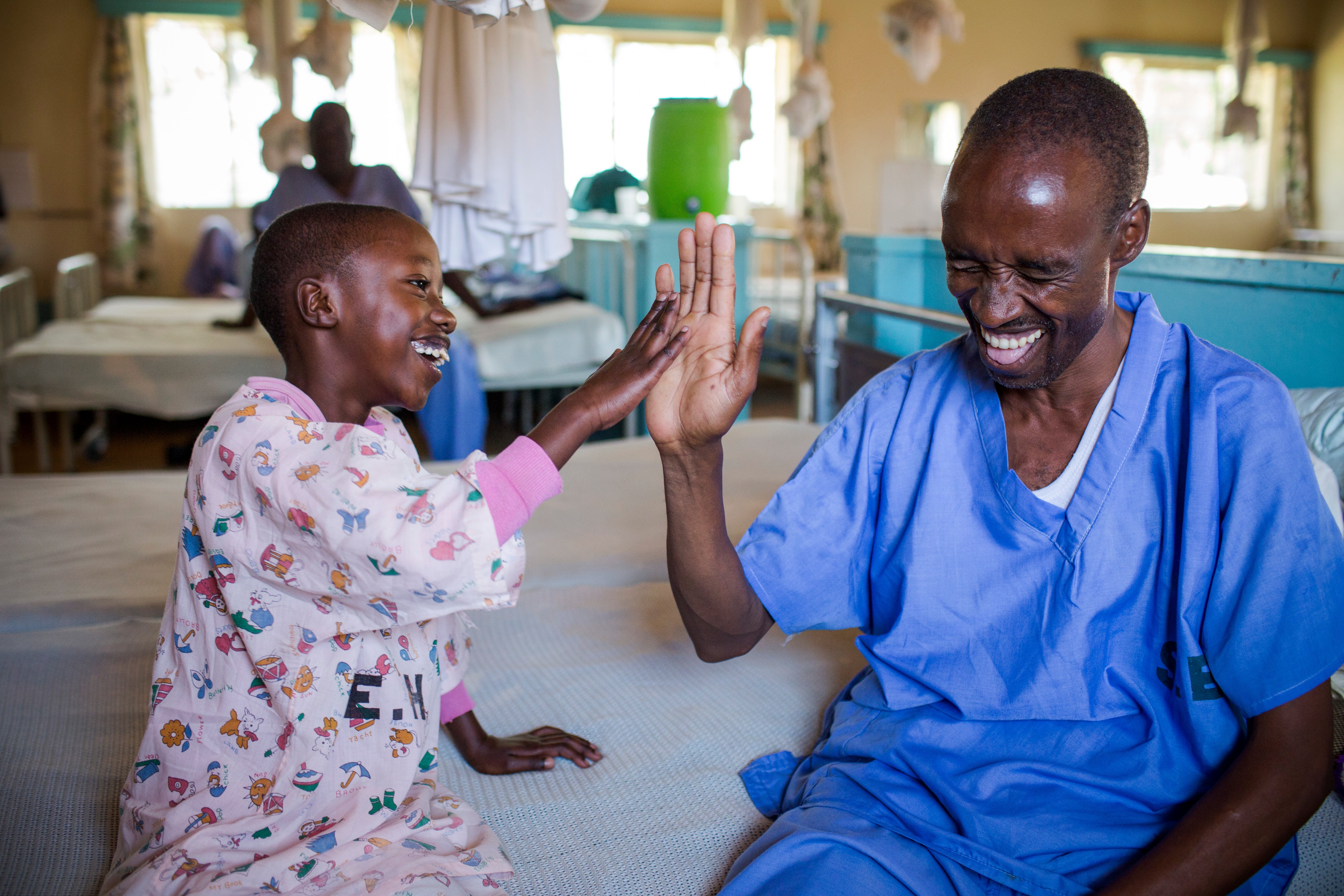
How our Theory of Change works
Our Theory of Change outlines how our programs lead to impactful change. It describes the strategies, actions, conditions and resources that lead to change. It guides the type of work we do, how we partner, and how we monitor our progress. This ensures we target our efforts strategically, and that we are continually learning and improving. It depicts six steps along the pathway to improved lives and strengthened communities.
Our work, with partners, contributes to collective action that changes the system and improves eye care to benefit individuals and communities. Here's how we deliver change:

Eye health action and investment
We lead targeted efforts to transform eye health outcomes in communities where the need is greatest. Through strategic investments and collaborative actions, we influence policy, generate new evidence, and drive impactful programs that break down barriers to eye care. Our roles ensure that our work creates lasting change and delivers the most significant impact for those most in need.

Scale and strengthen critical enablers in eye health
Transforming eye care requires a united effort. By scaling up eye care services, advancing research, and fostering system reforms, we and our partners build a robust health system. Our commitment to increased investment, stronger policies, better data use, and enhanced stakeholder coordination amplifies our collective impact, ensuring sustainable and effective eye care delivery for communities in need.

Optimise integrated people centred eye care and strengthen health and social systems
To achieve effective eye care, we must enhance every component of the health system. By strengthening financing, equipment management, workforce capabilities, service quality, and governance, we ensure that eye care is accessible, high-quality, and integrated. This comprehensive approach guarantees that eye care is delivers impactful outcomes for those in need.

Reduce blindness and vision loss and improve functioning for those with ongoing vision loss
Our ultimate goal is to significantly reduce blindness and vision loss while enhancing quality of life for those affected. By improving vision outcomes, we not only transform individual lives but also create broader social, economic, and developmental benefits. This focus leads to better health, educational opportunities, and living standards, positively impacting families and communities as a whole.
Eye health action and investment
Targeted investments and action
Influencer
We influence policy and practice through our systemic advocacy work.
Facilitator
We help stakeholders come together to achieve common goals through our systemic collective action work.
Knowledge Broker
We generate new evidence and approaches, and broker existing expertise and knowledge through our research and innovation work.
Technical Advisor
We contribute our technical expertise as we work in partnership to design and deliver eye care service improvement programs.
Funder
We strategically invest in activities that are expected to lead to the most significant changes in eye health outcomes for people in low resource settings, and in particular those people who experience the poorest eye health outcomes and the biggest barriers to eye care access.
Scale and strengthen critical enablers in eye health
Improvements in commitment, funding and targeted action
The outcomes and impacts we seek can only be achieved in broad and deep partnership. We can not make change alone. This level the Theory of Change outlines how we improve the collective efforts of both The Foundation and our partners, allowing us to help build a stronger health system that delivers effective eye care.
Scale up of eye care, research and innovation
Scale up of effective eye care and systems reforms
Increased investment in eye health
Stronger eye care policy and guidelines
Improved collection and use of eye health data
Stronger stakeholder engagement & coordination
Optimise integrated people centred eye care and strengthen health and social systems
Improvements in building blocks of eye care and health care
Through collective efforts, we expect to build a stronger health system that delivers more effective eye care. At this level of the Theory of Change the requirements of a strong health care system are outlined.
Strengthened eye care financing
Strengthened eye care equipment coverage and management
Strengthened eye care workforce coverage and management
Strengthened eye service coverage and quality
Strengthened eye health literacy
Strengthened eye care data collection, use and management
Strengthened eye care governance, leadership and coordination
Improvements in eye care coverage, quality and engagement
Right place
Right care
Right time
Right team
Right price
High rates of participation in care
Reduce blindness and vision loss and improve functioning for those with ongoing vision loss
Improvements in vision and functioning
This level of the Theory of Change depicts the eye health outcomes we seek.
Reduced blindness and vision loss
Improved functioning for those with vision loss
Social, economic and development impacts
This level of the Theory of Change depicts the impacts we expect to see in the lives of people, and in the functioning of families and communities if blindness and vision loss outcomes are improved.
Health
Education
Standard of living
Programming Principles
Our four programming principles guide the way we operationalise our work.

